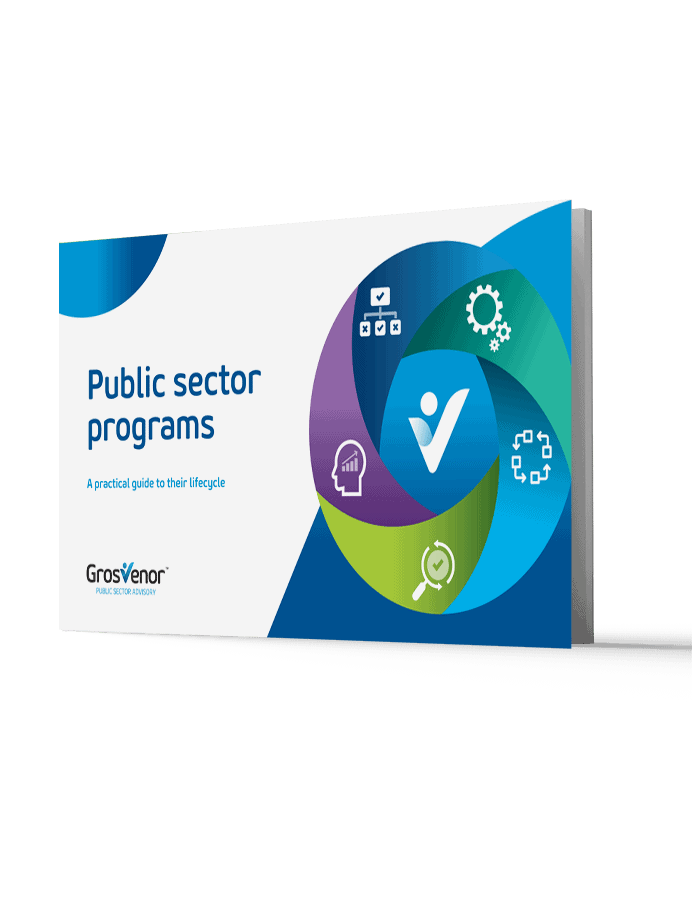What does Married At First Sight tell us about public policy?

Public Policy And Risk: The Bureaucratic Couple Married At First Sight
It’s not just Instagram influencers and wannabe entrepreneurs that marry at first sight. So too do well-meaning policy projects and their attention loving counterpart, risk. The two have been celebrity-spotted across all capital cities in Australia, in the halls and offices of parliament houses and departmental buildings. In government departments across Australia, if you’re not talking about the two together, you’ll be quickly out of fashion, and a job!
But sadly, it’s not an equal relationship. Policy has been dominated by risk for decades. I suggest Australia is in a toxic relationship with risk and it’s time for a conscious uncoupling.
Just like the reality television show, when you try and force two counterproductive concepts together, it won’t last. Risk and assessing it, isn’t there to sooth and comfort public policy life plans. It isn’t an equal relationship.
So why does this risk averse culture remain and what do we do about it?
Don’t avoid it
Any policy professional who has worked directly or indirectly with the public service knows that avoiding all risk is the unspoken rule. It’s so common it’s likely the metaphorical credo on the public service coat of arms.
I’d argue the hierarchical nature of the public service has been somewhat responsible for cultivating a culture of risk aversion. With every professional accountable to one level above them, there’s very little room for taking on greater responsibility, experimentation or mistake making. Often a task is expected to go through five, six, seven or even more layers of review and/or approval before it finds its end destination.
So how does one embrace risk when their superiors fear it and expect you to avoid it? For a start, don’t ask them to metaphorically walk down the aisle and marry themselves to a strange new concept (or person). That’s a leap too far for most people, even singles. You can, however, help to make the strange new concept seem less daunting and dangerous.
Unmask the real risk
All reality television provides a great lesson for public policy professionals; that it’s not what it seems. Producers are paid to create narrative where there isn’t. This is often the case with risk. The perception of risk is usually much greater and scarier than the risk itself. Remember the Y2K bug? Or how Segways were going to cause road accidents?
I’d argue the risk being avoided is risk itself. Very often, risk assessments sit completed, yet idle. Not used for any other purpose than seeking funding or ministerial approval as a once-off. This is a massive shame, because any start-up or service-oriented business will tell you how important ongoing management of risk is and should be.
The risk assessment is designed to help an organisation deliver change, rather than avoid it. It can identify not only what the risk is, but whether the risk is commensurate to threaten the impact you’re trying to have.
Use risk to your advantage
What about all the risks involved in changing a policy? You can’t just magic them away! Just as you can’t magic a perfect husband or wife out of thin air, there’s no perfect policy project that comes without risk.
A good, live risk assessment and review process is necessary for any public policy project and implementation. And there are real and serious risks. The responsibility we place on our government policy professionals is very high.
The same advice I’d give to wannabe MAFS contestants, is to not ignore such risk, but rather use it to your advantage. That is, to use the risk to guide the policy objectives.
The best example I think, of policy braveness, was the introduction of plain packaging for cigarettes. The risk of such a policy was high and the backlash fierce. The Tobacco Industry claimed (and still claims) that plain packaging would make it “difficult and time-consuming for retailers in small convenience outlets, resulting in errors and delays in serving likely to result in loss of sales to supermarkets and other outlets” as well as “breach international agreements” and “facilitate illicit trade”[1] No policy Director, Executive Director or Deputy Secretary wants to be blamed for drops in supermarket profits, illegal behaviour and violating international law! But by first unmasking the reality behind these risks, assessing whether they presented a commensurate level of impact on the community and then embracing them, led to one of the most internationally lauded policies implemented in Australia. And the results? “In response to the policy, smokers switched from more expensive to cheaper cigarettes and reduced their overall tobacco expenditure and expenditure intensity”[2]
It’s not all bad
People are complex. And marriage is more so. So is risk.
In my years of public service, I’ve witnessed how risk is assessed in blanket ‘good or bad’ terms. Any risk is ‘bad’. Any risk means ‘the minister won’t like it’. Or that ‘the media will pick up on it’. This is part of the cultural problem that prevents ideas and creative, critical thinking. And it’s largely because the risk assessment isn’t done correctly. We’re asking, ‘what’s the risk?’ rather than ‘what risks will we face and how do they rate against the benefits?’ The latter is much harder to answer, because it means looking into the unknown.
Embrace the unknown
Integral to the culture of risk aversion is the fear of the unknown. That terrifying concept toyed with by start-ups and Silicone Valley. Why would we risk our precious policy babies to such a fate?! Well, the most obvious reason being the answer to a problem is always unknown, till you find it!
New ideas solve problems. What’s not so simple, is developing new ideas. Peter Thiel, cofounder of PayPal writes about this, arguing that all great solutions come from the unknown. That replicating or expecting solutions to work for other problems is defeatist, stating that “the next Bill Gates will not build an operating system… And the next Mark Zuckerberg won’t create a social network. If you are copying these guys, you aren’t learning from them.” I’d argue we could have the next Gates or Zuckerberg (or next Mike Cannon-Brookes for an Australian angle) currently within the public service. But for how long will they stay, if asked to keep flogging the proverbial dead policy horse? Allowing for experimentation and creativity, will not only offer new solutions, but will keep your policy professional more interested in staying.
What does Married At First Sight teach us about public policy?
The good news is that you don’t need to marry risk. Assessing risk is a valuable and integral tool to delivering effective policy. Don’t let it get carried away with itself (like the contestants on the show).
Refusing to change because of the risks involved or the fear of potential future risks is like expecting Happily Ever After without making any effort. It won’t happen.
Because just like the contestants, policies that don’t embrace risk, but fear it, will prove to be very shallow, very quickly.
Not ready for marriage, but want a healthier relationship with risk? Talk to our counsellors/consultants now about how to use risk to better inform policy outcomes.
Author Melanie Learson









 We are all about sharing our expertise to help you and your organisation be the best it can be.
We are all about sharing our expertise to help you and your organisation be the best it can be.